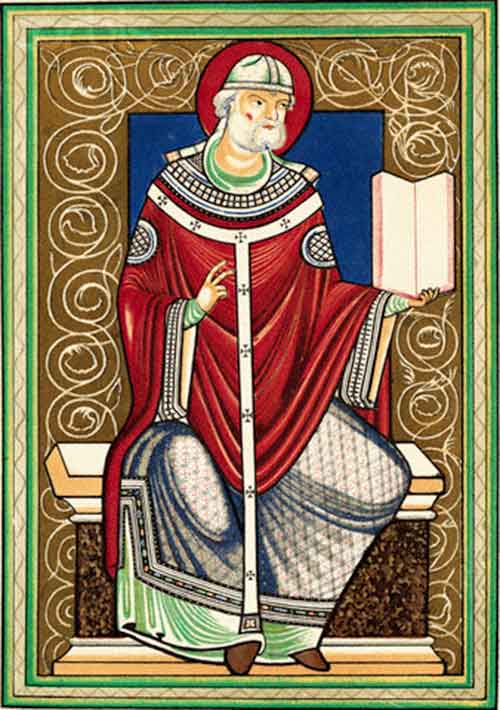
Updated paragraph: Along with Roman Catholics, many Anglican Calendars today celebrate Gregory the Great, Bishop of Rome, Teacher of the Faith, 604. This includes Australia, England, and Canada. Others celebrate on the day of his death, March 12. This includes The Episcopal Church and The Anglican Church in Aotearoa, New Zealand and Polynesia. [Of interest: the latter, my Church, used to have a principle of only one celebration on a day; September 3 is a blank day in our Calendar, and March 12 has two celebrations.]
Gregory, as bishop of Rome, in 595 sent Augustine, Paulinus, and others from Rome to England – encouraging them when they became disheartened to the point of wanting to turn back. Augustine, who led this mission, was prior of of the Abbey of St Andrew’s in Rome (I have visited this – it is now a Camaldolese monastery). Augustine is the first Archbishop of Canterbury – instrument of unity and communion in global Anglicanism.
It is important to note (“And did those feet in ancient time…” notwithstanding) that Christianity had been in England from the earliest – Gregory’s mission attempted to conform English Christianity to the Roman form. The attempt to have the native British bishops to submit to Augustine did not succeed.
Encountering pale-skinned English boys at a slave market, Gregory is reputed to have said,
Non Angli, sed angeli, si forent Christiani.
They are not Angles, but angels, if they were Christian.
This led to his sending of Augustine and his fellow monks.
We have in the story of Gregory’s mission to England, then, so many elements that continue to be threads in Anglicanism: a Benedictine foundation with its disciplined daily praying of the Bible, especially the psalms, in the Daily Office; the balanced Benedictine approach; the value of chant and treasuring of music (note the name: “Gregorian chant”); both the discomfort and respect for the place of the Bishop of Rome;
Even strongly protestant find Gregory Great: John Calvin in Book IV of his Institutes called Gregory the last good pope.
Some other titbits: When we pray the Lord’s Prayer after the Eucharistic Prayer and before the Breaking of the Bread we are following Gregory – prior to him, the order went: Eucharistic Prayer – Breaking of the Bread – Lord’s Prayer. The life of St Benedict is found in Gregory’s second of his four books of Dialogues.
It is by loving-kindness and forgiveness that you rule your people, O God.
Benedictine Daily Prayer page 1903
Listen kindly to our prayer,
and in communion with Pope Saint Gregory give to your Church’s shepherds the spirit of wisdom
so that the spiritual progress of their flocks may be to them a source of unending joy.
This we ask of you…


